Your guide to Outdoor Winter Gear
If you're like us then you probably decide to opt-outside year round...The heat doesn't detour you from going out to have a good time, nor does the cold.
I know I personally get excited about the cooler temperatures that late fall and parts of Winter bring. You no longer sweat to death, there's less people on the trails and campsites, and you don't have to worry so much about snakes (yes, snakes are a biggie for me...especially living in copperhead land).
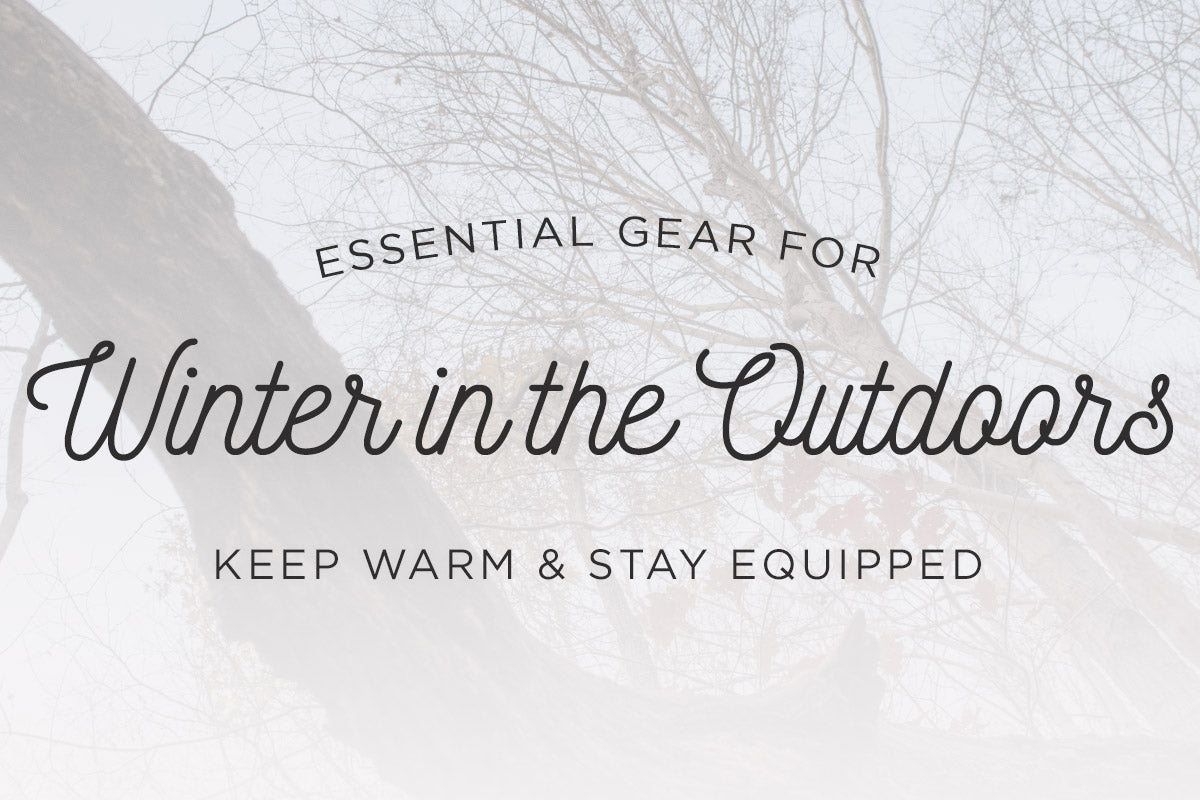
The cooler temps mean that our bags get a little more robust, our gear gets a little heavier and we prepare a bit more when we're about to set out on an outdoor excursion. So with this said, I wanted to share a bit about what changes in my outdoor loadout, specifically when i'm out doing scouts - hikes - and photography ventures.
The essentials for going into the outdoors/backcountry:
The core-essentials of my outdoor kit stay relatively the same all year round, with some additions during the cooler months. Below are the things you won't catch me outdoors without:
1) A sturdy, well designed pack. Such as the Chief.
A reliable pack when you're venturing in the outdoors is crucial. It can either make or break an enjoyable time. A well designed pack will haul your gear with ease and make it comfortable for you. A well designed pack will also be robust enough to handle the rigors and demands of rough terrain.

2) Some kind of shelter in case you get stuck out overnight.
I honestly don't go overboard in this area. I either pack a small 1-person bivvy tent or a tarp, depending on my desired weight. I go out on most of my outdoor ventures as day hikes, so if I get stuck out - I just need something to keep the rain off.
3) A small fire kit.
I always have a ferrocerium rod in my pocket as part of my EDC, and I carry a backup in my firekit as well. Ferro rods are the most reliable way of guaranteeing a spark to make fire, even when they're wet. But if I really need fire in a hurry, I carry the obvious bic lighter and storm proof matches.
I carry my fire kit in one of our $19 Truckie Pouches. They are the ideal size for stowing the contents of your fire kit.
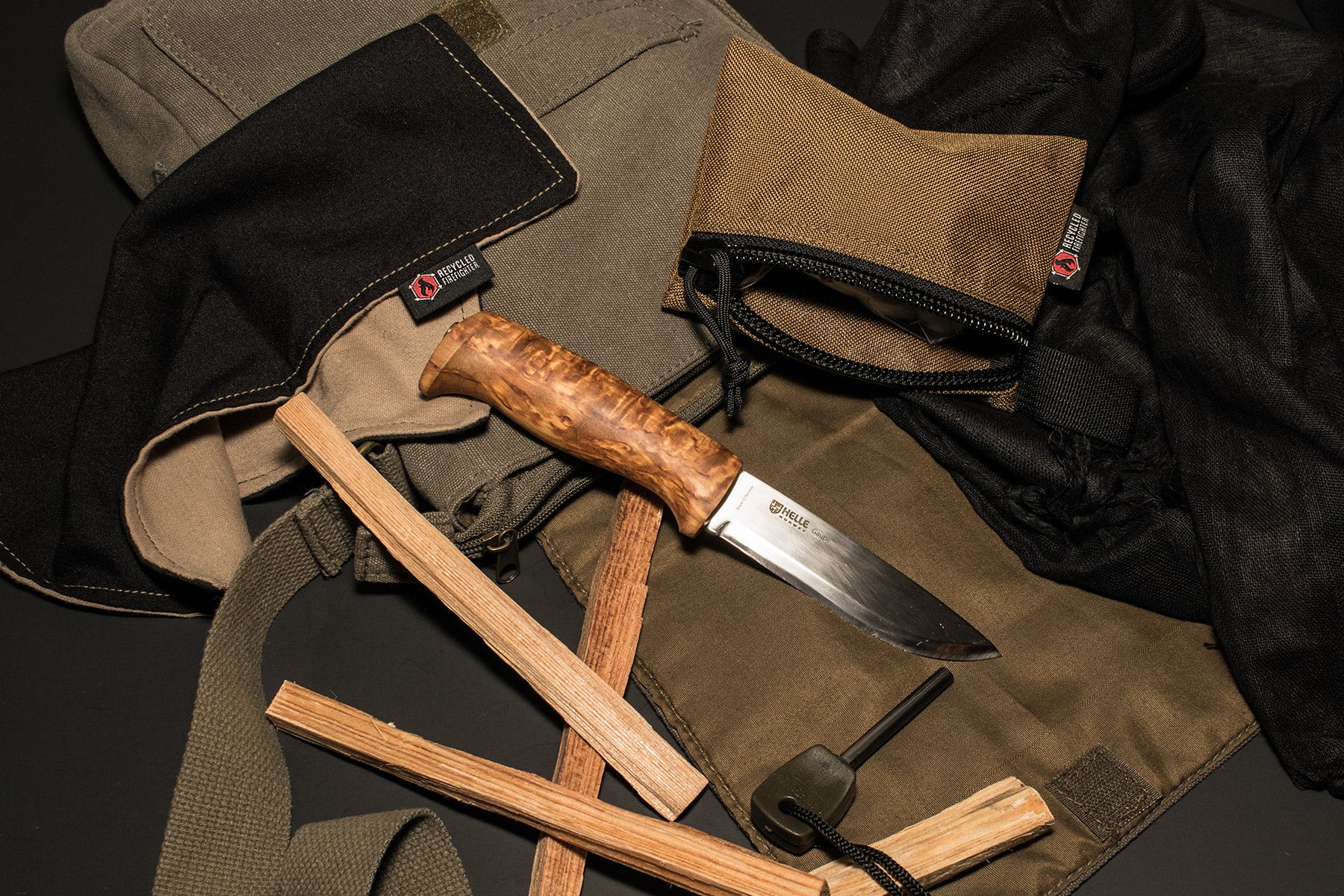
And if you really want to bump up your fire kit I recommend carrying along some tinder, char cloth and fatwood. This can make achieving a fire so much easier.
4) Something to cook in, along with some food and plenty of water.
This is a big one for me. Often times I stay out all day long and expend a lot of calories (hiking 8-10 miles on average). So, I either bring something along to cook (a mountain house meal), or some trail bars and beef jerky. And I make sure to bring PLENTY of water. Along with a small Sawyer Water Filter as a backup.
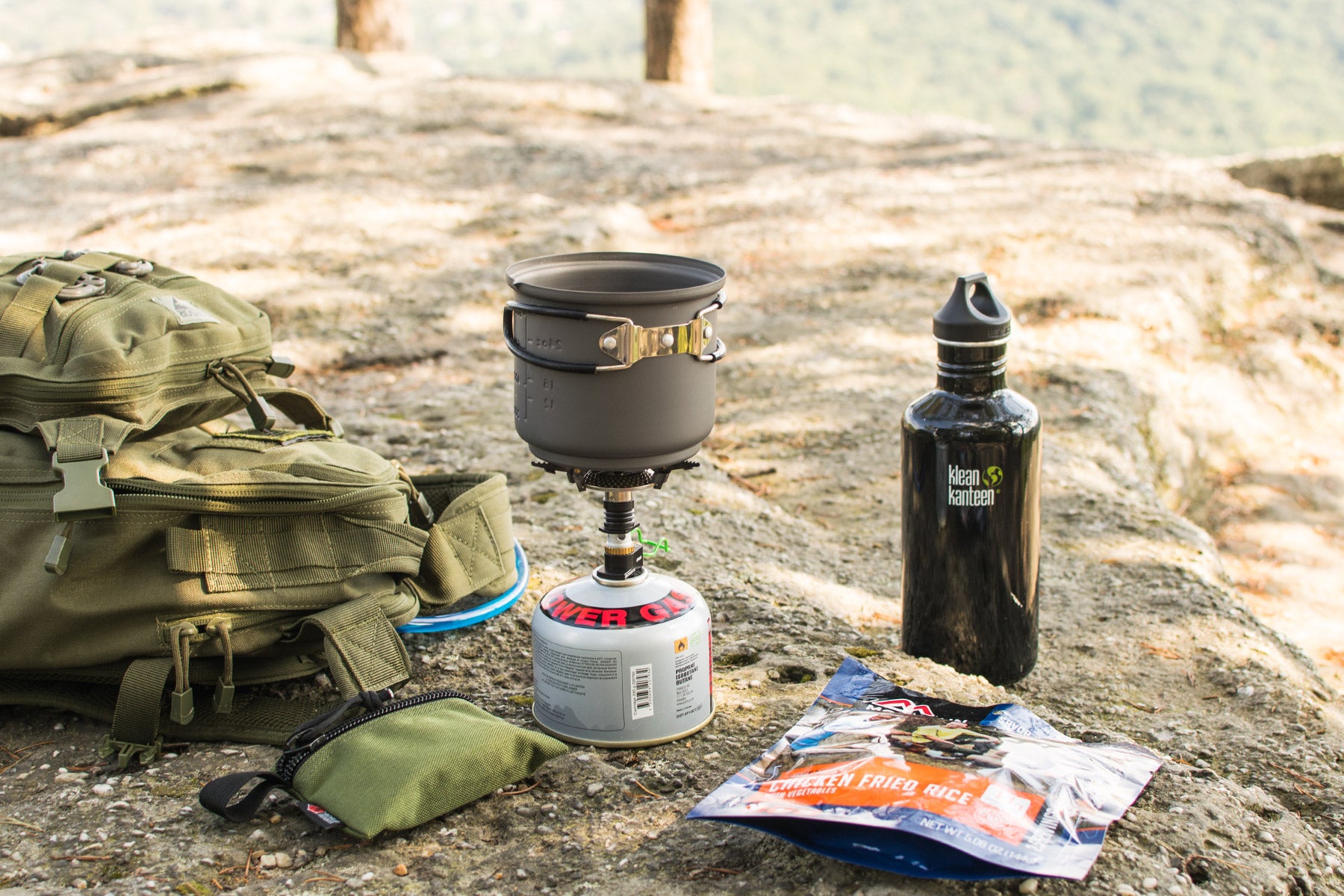
5) A Primary and Secondary Knife.
I would recommend you carry a large belt-knife that is capable of hard work. As well as a small secondary knife that is capable of handling more delicate tasks.
Below you're seeing my Helle Gaupe and Mora Eldris. Both of these are excellent knives to take outdoors.
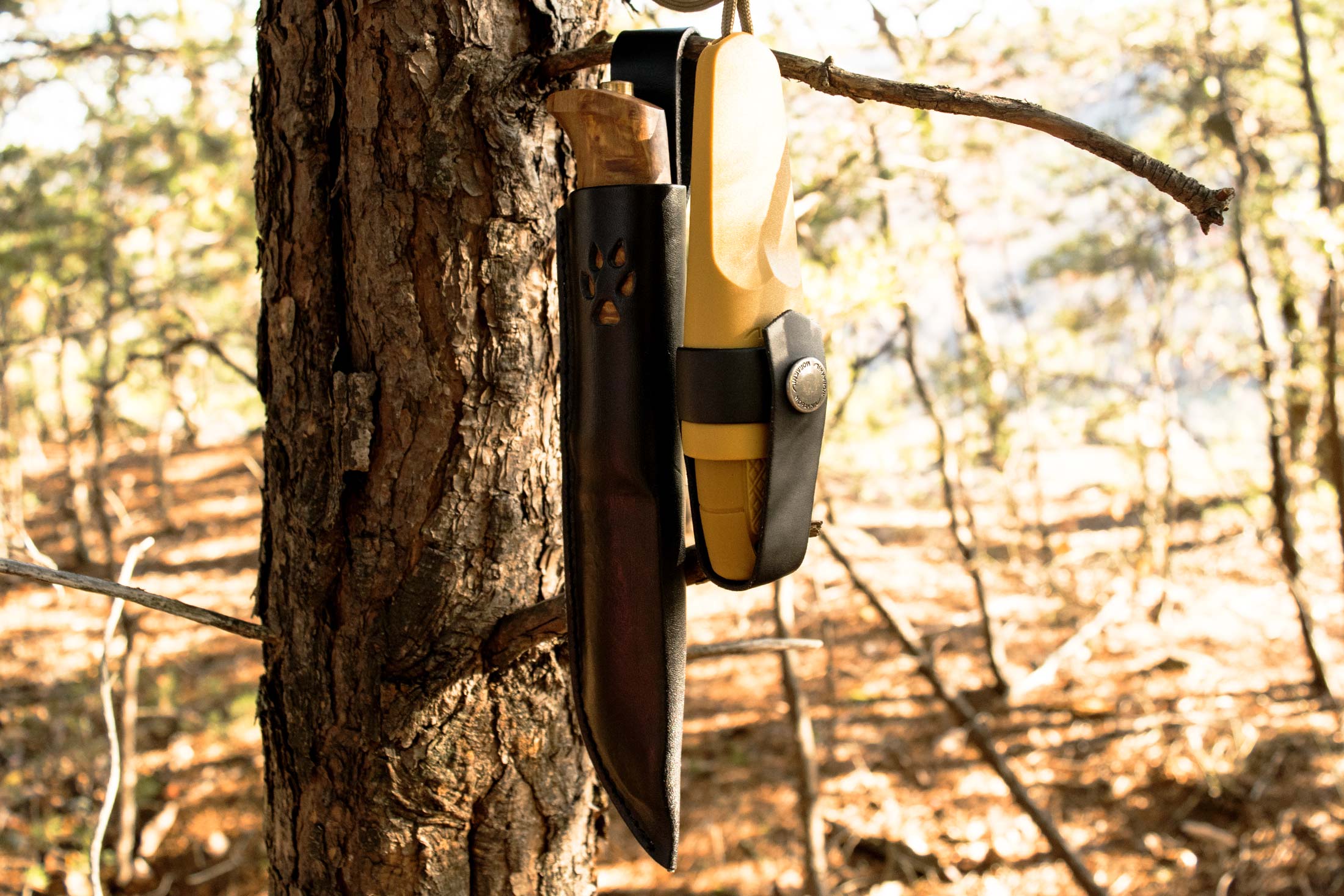
Wrapping up the essentials:
6) Some cordage, such as 550 Paracord.
I never go outdoors without a large bundle of 550 cord. You can do so many things with cordage. From shelter making, to outdoor projects, fixing things, facilitating certain first aid....The list is pretty extensive. And it's cheap. You can buy a 50ft of this stuff for 4 or 5 dollars.

Branching into Winter Specific Gear
Branching into items that are more specific to winter or have winter-specific capabilities, I would recommend that you pack the following either on your person or in your bag.
7) Good winter clothing:
Maintaining your core temperature when outdoors is so crucial. Hypothermia is something we've all heard about, and i'm sure none of us want to experience first hand. So, dress yourself appropriately for the conditions.
Here are some items that I highly recommend investing into, and wearing when you're outdoors this winter:
-
Nicely padded wool socks:
Socks with a high percentage of wool are not as uncomfortable as you would think, and they won't itch your feet off either. I wear socks with at least 30% wool every day and they are mighty comfortable/supportive. They will also dry out very quickly, should they become wet (unlike cotton...avoid cotton in cold and/or wet conditions). -
Moisture wicking fabrics:
I highly recommend wearing moisture wicking fabrics as your base layers...IE: Under pants and shirts. They seem to retain heat a lot better in my experiences and they wick sweat away from your body, preventing hypothermic conditions from setting in. They also dry out very quickly, should they get wet. -
A nice winter hat:
Just like your feet, which loses insulation very quickly - So does your head. So, protect it. I recommend a good beanie hat or even a furry trapper hat, if you feel like pulling an Uncle Eddie (Chevy Chase Christmas). -
Some Gloves & Hot Hands:
It's inevitable that you're going to lose your dexterity at some point during the winter. And you may need it when you're outdoors for certain tasks. So, bring some gloves along to help insulate/protect your hands. As well as some of the disposable $1 packs of "Hot Hands" (which can also work for warming other parts of your body if you need them to).

8) Carry along a sleeping bag or some sort of warm blanket:
I have been packing some sort of blanket/sleeping bag in my car for years when the temperatures start to drop. And as I have gotten into hiking/outdoor adventuring, I always carry a sleeping bag, rated for the temperatures that I plan to venture into.
* Bonus points if you have the space to carry a sleep pad like a thermarest...Which can provide insulation from the ground.
9) Compass/Navigation:
While I advocate having a compass and an area map for navigation year-round, I certainly recommend having them during the winter. Even on trails that i'm highly familiar with, I find myself getting a little disoriented during the colder months when all the leaves have fell. Everything looks a little different and can take you by surprise, when you're used to things looking a certain way.

10) Branching off of the compass - Have a notebook handy:
I make it a habit when exploring new areas to carry a notebook and take trail notes. Or jot down quick readings from my compass. This has surprisingly saved my butt a few times when i've gotten out, and got turned around.
I personally carry either a Field Notes or Rite In The Rain journal when i'm out. With one of our notebook covers on it. They help keep my notebooks looking new and prevent them from tearing up...Even after months of use. (Please don't ask me to choose between field notes or RITR, they're like knives....I can't choose haha)
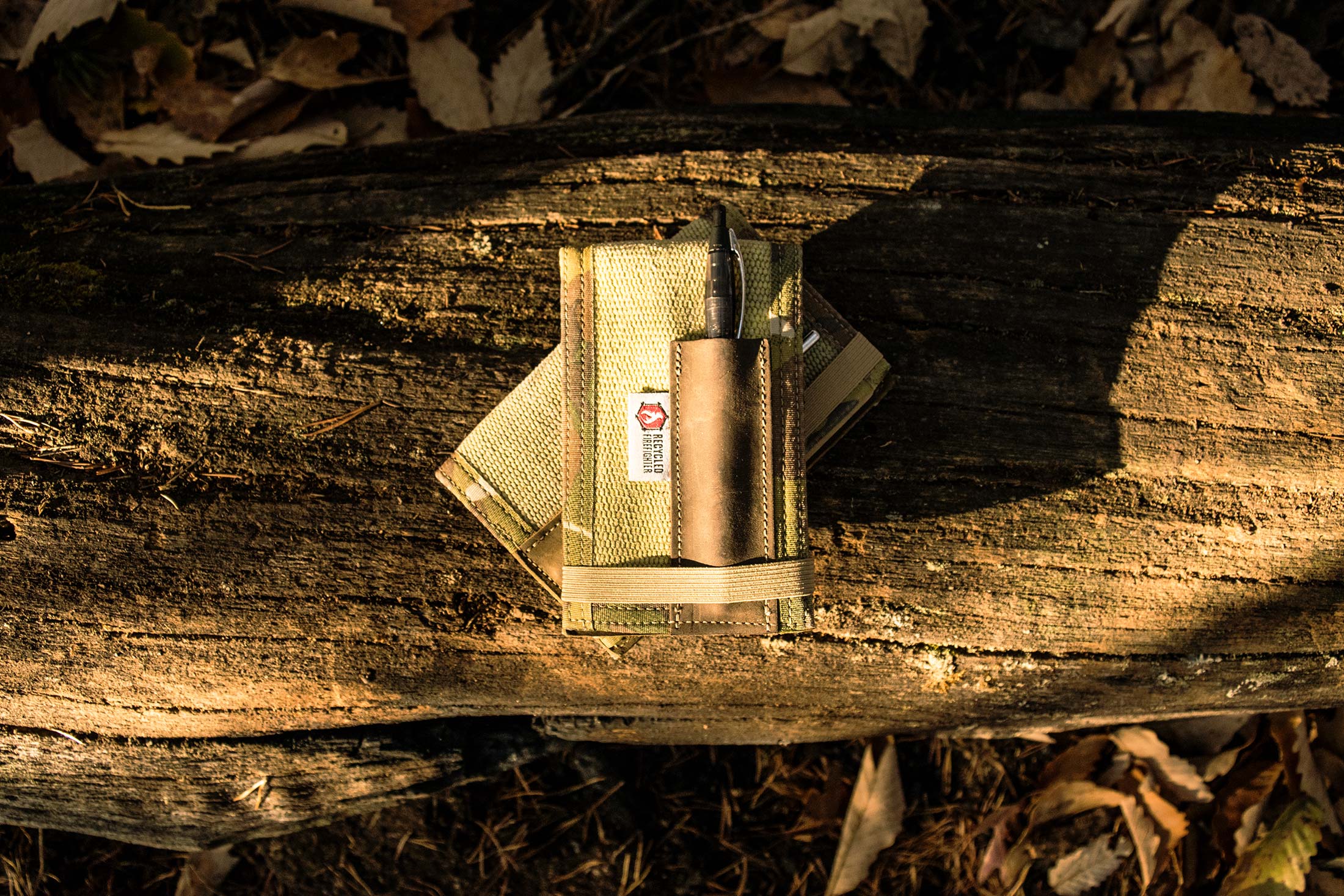
Are you winter-ready for your adventures?
Share with us what gear you bring along during the colder months...We'd love to hear from you! You can either comment below, or tag us on Instagram with our hashtag #RecycledFirefighter.
We hope this article was fun and insightful for you to read! If you have any questions just drop us a line and we'd be happy to help! Otherwise, stay safe out there and enjoy this coming Holiday Season!





Great post Jake!!! GREAT!!!
Leave a comment